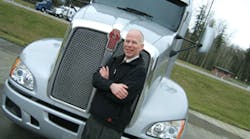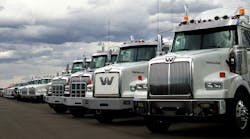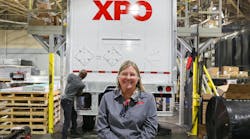MOUNT VERNON, WA. Despite how slippery Class 8 trucks may now look, there’s still room for fuel-economy improvements, according to Kenworth Truck Co. assistant chief engineer. At a Kenworth media event held here this week at the Paccar Technical Center (which is operated by the OEM’s parent firm), Jim Bechtold told FleetOwner that demand remains strong for greater fuel efficiency--- even if it’s gained in increments as slight as 1/10th of an MPG.
“I don’t think we’ve yet done all we can in terms of improving truck aerodynamics to gain more fuel efficiency,” said Bechtold. “For example, more can be done to manage under-hood airflow; we’re only beginning to scratch the surface there,” he explained. “As we learn more about ’07 powertrains in the field, we can make gains there too. And anti-idling efforts are huge in terms of fuel economy improvements, environmental benefits, and overall cost savings for truck operators.”
Kenworth had several 2008 model trucks equipped with ’07-compliant engines on hand at the tech center for test-driving on a closed course as well as on public roads. Among them were several new T-660 highway tractors, several T-800 and W900 units, plus a T-300 tractor and a new K360 medium-duty cabover.
According to Bechtold, fuel economy losses from the lower-emission ’07 engines can be offset with aerodynamic improvements. What’s more, he said fuel economy gains could actually be made with future design efforts.
“As a vehicle integrator, our job is to install the engine, transmission, axles and other components on our chassis in such a way as to get the best fuel economy possible,” he explained. “Going forward, we’re going to look in all areas for fuel economy gains– reducing weight, improving engine cooling packaging, reducing idling– whatever it takes to make sure our vehicles are as fuel efficient as possible.”
To comment on this article, write to Sean Kilcarr at [email protected]




